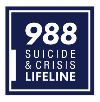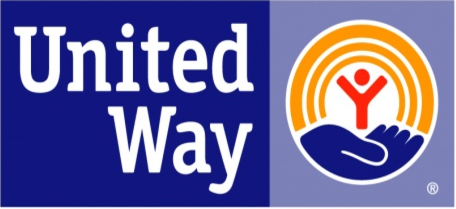
Bridging the Isolation: Online Dungeons and Dragons as Group Therapy during the COVID-19 Pandemic
By Per Eisenman and Ally Bernstein
When one of us logs into the Zoom session about ten minutes early, a picture of a cat immediately pops up. Martin has been waiting all morning for the group to start. He appears briefly and shows us his cat, Betty, sitting on his lap, before turning the video off so that only the photo of Betty is visible. Gradually, everyone joins and our Dungeons and Dragons (D&D) game begins. Martin is committed to the group; he’s never missed a session and is always early. He plays an elf wizard named Sylvan who has a cat as his magical animal companion, also named Betty. Martin was initially a bit shy but has integrated into the group and collaborates with others when making decisions; he also loves to talk about Sylvan’s cat and backstory. Martin joined the group after the COVID-19 stay-at-home order, once we moved to a virtual environment. Like some others in the group, this is Martin’s only social contact outside his family. The therapeutic D&D group allows for a structured social interaction, a place where young people can connect, practice social skills, and modulate their inner and outer worlds. Many of the young people we work with experience social anxiety, depression, or social skill deficits. The experience of a safe social setting where they can experiment with becoming someone else allows them to develop connections with one another that can be an antidote to loneliness and an opportunity for growth. The COVID-19 pandemic has been a time of isolation. Young people especially are having fewer opportunities to develop socially, and schools are not able to provide as many opportunities for social contact. Telehealth group therapy using role-playing games creates opportunities for social connection that may not be possible in-person during the pandemic.
Dungeons and Dragons holds a place in the pop-culture imagination as a niche interest, but its popularity has grown in recent years and therapists have started implementing the game more widely as a group therapy modality for older children and adolescents (Bowman & Lieberoth, 2018; Miller, 2017; Enfield, 2007; Gutiérrez, 2017; Rosselet & Stauffer, 2013). Dungeons and Dragons is a role-playing game (RPG), also known as “Tabletop role-playing game” (TTRPG). In D&D, one facilitator describes a world and the participants (playing characters) describe their actions in the world. Sometimes success and failure are based on dice rolls, but players’ creativity and collaboration are also key in helping a group achieve their goals within the world. The game has many decision points, and each player can change the course of the story. Martin's character Sylvan has blasted open treasure chests with fireballs, duped goblins by pretending to be their grandmother, and hatched a dragon egg. Martin’s creativity influenced the world for himself and the other players, creating a new set of circumstances and changing the direction of the story.
During the game, the facilitator sets the stage, “You enter the pirate’s cavern. As you go in, you see a couple of pirates standing guard.” The players discuss what they would like to do. Should they fight the pirates or try to sneak past them? “Let’s trick them,” Maya, another player, says. She is shy in real life but plays a tough brute who likes smashing down doors. Martin likes this idea and they work together to come up with a ruse. Martin’s character Sylvan says, “We are poor pirates who have lost our way in the tunnels. Could you tell us the way to the ship?” He rolls the dice to see whether he can convince the pirate guards.
Traditionally, D&D is played in person, sitting around a table with maps of the adventure setting, rolling dice, and telling the story together. However, it is possible to play the game remotely through videoconferencing and the use of online platforms designed to connect physically distanced players. As of late, remote D&D use has increased dramatically. The virtual medium confers new benefits (and poses new challenges) during the COVID-19 pandemic and in an era of social distancing. It translates surprisingly well to a telehealth group therapy experience; when asked, Martin told facilitators, “I like playing online better.”
In the many groups that we have run with colleagues, we have seen remarkable things happen. We were particularly struck by the memory of Kendra, who had a very clear vision of how she wanted the game to proceed. She wanted to control the narrative so badly that she soon began frustrating the other players. “Can I roll the dice to persuade Maya that she should give me her gold?” Kendra asked. She prioritized stealing gold or impressing pirates controlled by the game master rather than helping the other characters. The frustration of the group turned into a discussion, and Kendra ended up changing her character’s behavior entirely, deciding that the character needed to work with the group, to save them, and eventually to sacrifice herself for the greater good. She said, “I want my character to help the group but the shift has to make sense for her character arc. She can’t just change overnight.” We had numerous discussions about what it might mean for her character to develop. We asked the participants what they valued about the game, and another player said, “Working together as a team.” The emotional message felt palpable. We were thrilled that the adolescent participants were able to lead this discussion themselves and process as a group with only minimal prompting from the adult facilitators.
Role-playing games like D&D involve the players describing the actions of their characters, while the game master describes the rest of the world and the people who inhabit it. The world is imaginary, and visual aids are optional. This system allows for players to explore identity construction and navigate group dynamics. Much like any good therapeutic group, what happens within the context of the game often reflects the players’ lives out-of-game. When the game master is also a therapist, questions like “How are you similar or different from your character?” and “Why did your character make that decision?” make the game a clinical experience. The avatar of the character allows for a safe distance through which to explore, process, experiment, fail, and succeed.
While D&D has long been an effective group therapeutic modality, creating a shared imaginary world presents unique opportunities during the COVID-19 pandemic, when we are unable to safely convene in person. Every age has different developmental tasks to achieve, and during the pandemic, these tasks have been either interrupted or have required us to make notable shifts in how we carry them out. With schools shifting the way education is delivered due to the pandemic, the amount of social interaction is significantly reduced. On the whole, we are spending more time isolated from others, and young people are having fewer opportunities to develop socially. RPGs, a high-interest activity, allow social experiences to happen through telehealth in a way that might be currently impossible in-person.
Role-playing games feature goals, conflict, choices, and relationships. Young people can do something together by completing tasks that require creativity and teamwork. Playing every week creates routine and ritual. Having a group means that young people have regular contact with adults and peers outside their immediate family. Games can be adapted for different age groups and needs. Children and adolescents can develop executive function and practice resiliency. The technology necessary to play the game online can malfunction and lead to frustration, allowing participants to practice patience and engage in troubleshooting. Also, because the games are fun and silly and joyful, the fantasy setting can provide everyone with a much-needed break from the stress and grief of the current world (or a way to process grief and loss – characters can die, too).
This innovative form of group telehealth provides an opportunity to engage kids that would not otherwise engage and to support social skill development with a group in serious need. The implementation of RPGs in telehealth demonstrates that we clinicians can be creative and resourceful. If right now, we want to offer something that simulates living and striving in close proximity to others, we can. These challenging times call for innovation and there are many different ways to deliver services. Therapy can become exactly what kids need – a safe but exciting place to be challenged to grow. In other words, an adventure.
References
Bowman, S. L., & Lieberoth, A. (2018). Psychology and Role-Playing Games. Role-Playing Game Studies, 245-264. DOI:10.4324/9781315637532-13
Enfield, G. (2007). Becoming the hero: The use of role-playing games in psychotherapy. In L. C. Rubin (Ed.), Using superheroes in counseling and play therapy (p. 227–241). Springer Publishing Co.
Gutiérrez, R. (2017). Therapy & Dragons: A look into the Possible Applications of Table Top Role Playing Games in Therapy with Adolescents. Electronic Theses, Projects, and Dissertations. 527. https://scholarworks.lib.csusb.edu/etd/527
Miller, D. (2017). Negotiating With The Dragon: Role-Playing Games As Group Therapy. WUSF News. August 11, 2017. https://wusfnews.wusf.usf.edu/post/negotiating-dragon-role-playing-games-group-therapy
Rosselet, J. G., & Stauffer, S. D. (2013). Using group role-playing games with gifted children and adolescents: A psychosocial intervention model. International Journal of Play Therapy, 22(4), 173-192. DOI:10.1037/a0034557





